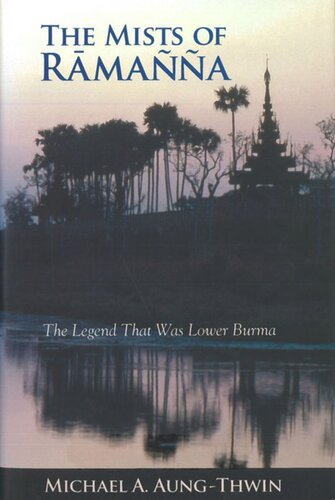

Most ebook files are in PDF format, so you can easily read them using various software such as Foxit Reader or directly on the Google Chrome browser.
Some ebook files are released by publishers in other formats such as .awz, .mobi, .epub, .fb2, etc. You may need to install specific software to read these formats on mobile/PC, such as Calibre.
Please read the tutorial at this link: https://ebookbell.com/faq
We offer FREE conversion to the popular formats you request; however, this may take some time. Therefore, right after payment, please email us, and we will try to provide the service as quickly as possible.
For some exceptional file formats or broken links (if any), please refrain from opening any disputes. Instead, email us first, and we will try to assist within a maximum of 6 hours.
EbookBell Team

5.0
60 reviewsScholars have long accepted the belief that a Theravada Buddhist Mon kingdom, Rāmaññadesa, flourished in coastal Lower Burma until it was conquered in 1057 by King Aniruddha of Pagan—which then became, in essence, the new custodian and repository of Mon culture in the Upper Burmese interior. This scenario, which Aung-Thwin calls the "Mon Paradigm," has circumscribed much of the scholarship on early Burma and significantly shaped the history of Southeast Asia for more than a century. Now, in a masterful reassessment of Burmese history, Michael Aung-Thwin reexamines the original contemporary accounts and sources without finding any evidence of an early Theravada Mon polity or a conquest by Aniruddha. The paradigm, he finds, cannot be sustained.
How, when, and why did the Mon Paradigm emerge? Aung-Thwin meticulously traces the paradigm's creation to the merging of two temporally, causally, and contextually unrelated Mon and Burmese narratives, which were later synthesized in English by colonial officials and scholars. Thus there was no single originating source, only a late and mistaken conflation of sources. The conceptual, methodological, and empirical ramifications of these findings are significant. The prevalent view that state-formation began in the maritime regions of Southeast Asia with trade and commerce rather than in the interior with agriculture must now be reassessed. In addition, a more rigorous look at the actual scope and impact of a romanticized Mon culture in the region is required. Other issues important to the field of early Burma and Southeast Asian studies, including the process of "Indianization," the characterization of "classical" states, and the advent and spread of Theravada Buddhism, are also directly affected by Aung-Thwin’s work. Finally, it provides a geo-political, cultural, and economic alternative to what has become an ethnic interpretation of Burma’s history.
An electronic version of this book is freely available thanks to the support of libraries working with Knowledge Unlatched, a collaborative initiative designed to make high-quality books open access for the public good. The open-access version of this book is licensed under Creative Commons Attribution-NonCommercial-NoDerivatives 4.0 International (CC BY-NC-ND 4.0), which means that the work may be freely downloaded and shared for non-commercial purposes, provided credit is given to the author. Derivative works and commercial uses require permission from the publisher.